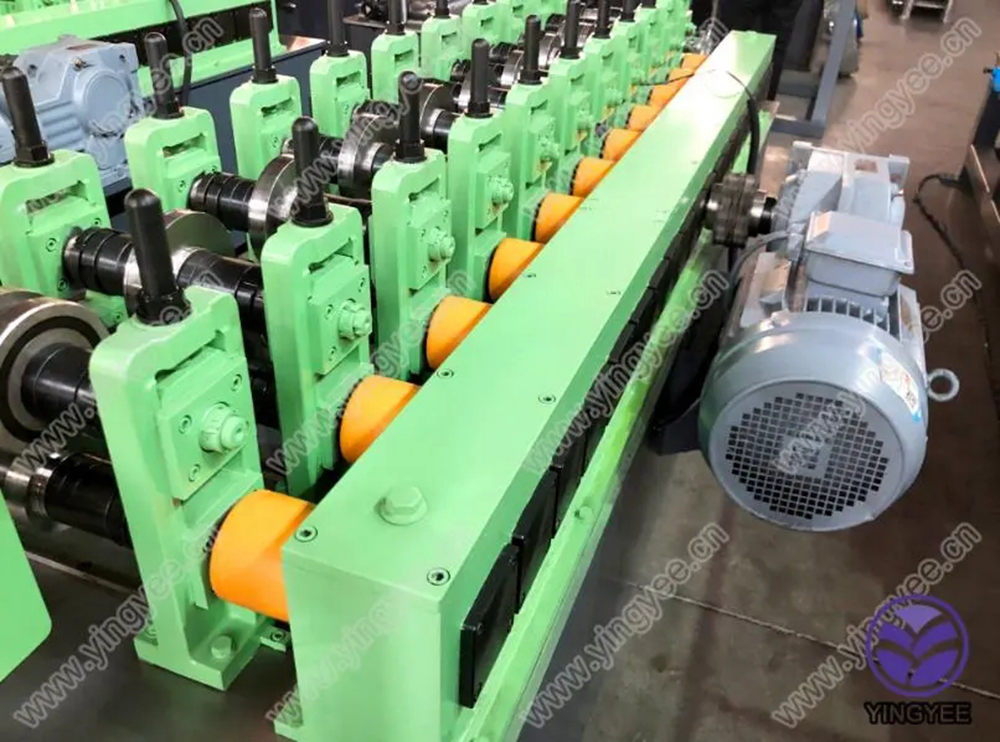
The Evolution and Impact of Metal Rolling Door Cold Forming Machines
In recent years, the demand for efficient and durable building materials has escalated tremendously across the globe. One of the most critical advancements in this realm is the metal rolling door cold forming machine. This innovative equipment has revolutionized how metal rolling doors are manufactured, enhancing efficiency while ensuring high-quality production.
Understanding Cold Forming Technology
Cold forming refers to the process of shaping metal at room temperature. When a metal like steel is subjected to this technique, it retains its mechanical properties, allowing for the creation of robust and durable products. Cold forming is particularly advantageous in manufacturing metal rolling doors because it minimizes the need for secondary operations. This results in a streamlined production process that saves both time and costs.
The Design and Functionality of Cold Forming Machines
A metal rolling door cold forming machine comprises several key components, including the uncoiler, forming stations, cutting unit, and control system. Initially, the metal coil is unwound using the uncoiler. As the coil passes through various forming stations, rollers progressively shape the metal into the desired profile.
The machines are capable of producing various designs and sizes, catering to diverse architectural requirements. After the metal is shaped into the rolling door profile, the cutting unit accurately trims it to the specified length. The integration of computer control systems enhances precision, allowing manufacturers to efficiently manage the production line with minimal wastage.
Advantages of Using Cold Forming Machines
One of the primary benefits of using a metal rolling door cold forming machine is increased production speed. As these machines are designed for high efficiency, manufacturers can produce significant quantities of metal doors in a fraction of the time it would take using traditional methods. Additionally, the automation features reduce manual intervention, resulting in fewer errors and greater consistency in product quality.

Another significant advantage is the versatility offered by these machines. They can be easily adjusted to fabricate different door designs, lengths, and thicknesses, making them an ideal solution for manufacturers who need to meet specific customer demands.
Moreover, cold-formed metal doors exhibit exceptional strength and durability compared to their conventionally formed counterparts. This resilience makes them suitable for high-traffic areas and environments where security is paramount, such as warehouses, retail stores, and commercial buildings.
Sustainability and Environmental Impact
In today’s environmentally conscious market, sustainability plays a crucial role in manufacturing. The cold forming process generates less waste compared to other manufacturing methods, primarily because it requires fewer materials and less energy. Additionally, metal can be recycled effectively, aligning with sustainable practices. As a result, manufacturers who utilize cold forming technology can significantly reduce their carbon footprint while producing high-quality products.
The Future of Metal Rolling Door Cold Forming Machines
As technology continues to advance, the future of metal rolling door cold forming machines looks promising. Integrating artificial intelligence (AI) and the Internet of Things (IoT) will likely lead to even more efficient automation processes. With predictive maintenance capabilities and real-time monitoring, manufacturers can optimize their production lines, reducing downtime and maximizing output.
Furthermore, the ongoing advancements in materials science may allow for the creation of even more innovative products, with improved thermal insulation, soundproofing, and security features. This evolution will meet the growing needs of various industries and enhance the overall value proposition of metal rolling doors.
Conclusion
In summary, the metal rolling door cold forming machine represents a significant leap forward in manufacturing technology. By enhancing efficiency, promoting sustainability, and providing versatile solutions, these machines are shaping the future of the construction industry. As we look ahead, the continued evolution of these technologies promises to drive further innovations, ultimately benefiting manufacturers and consumers alike.